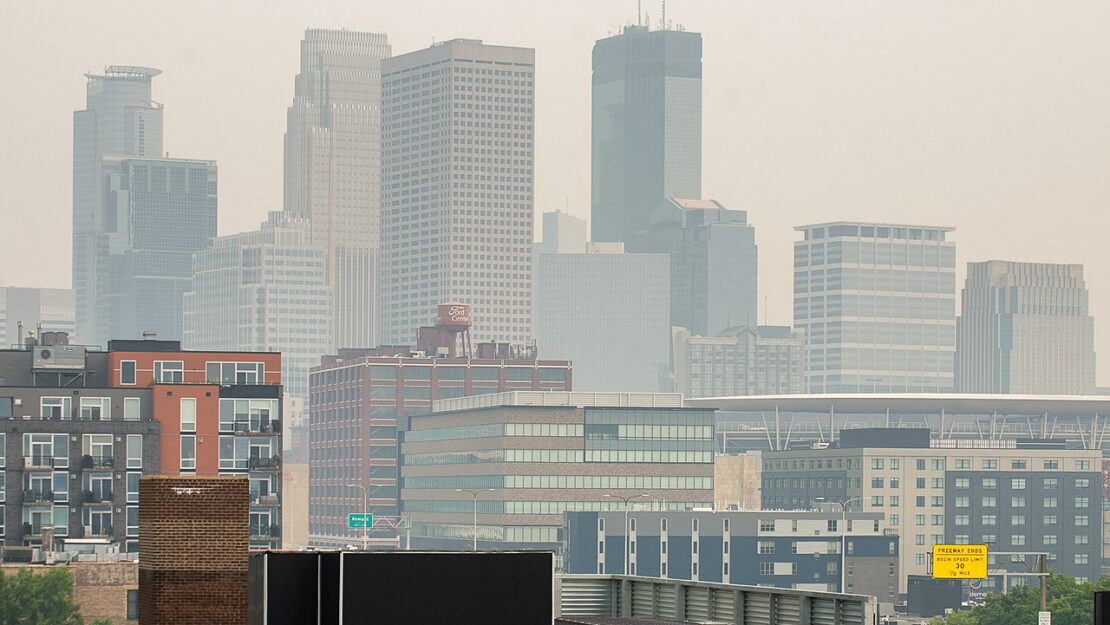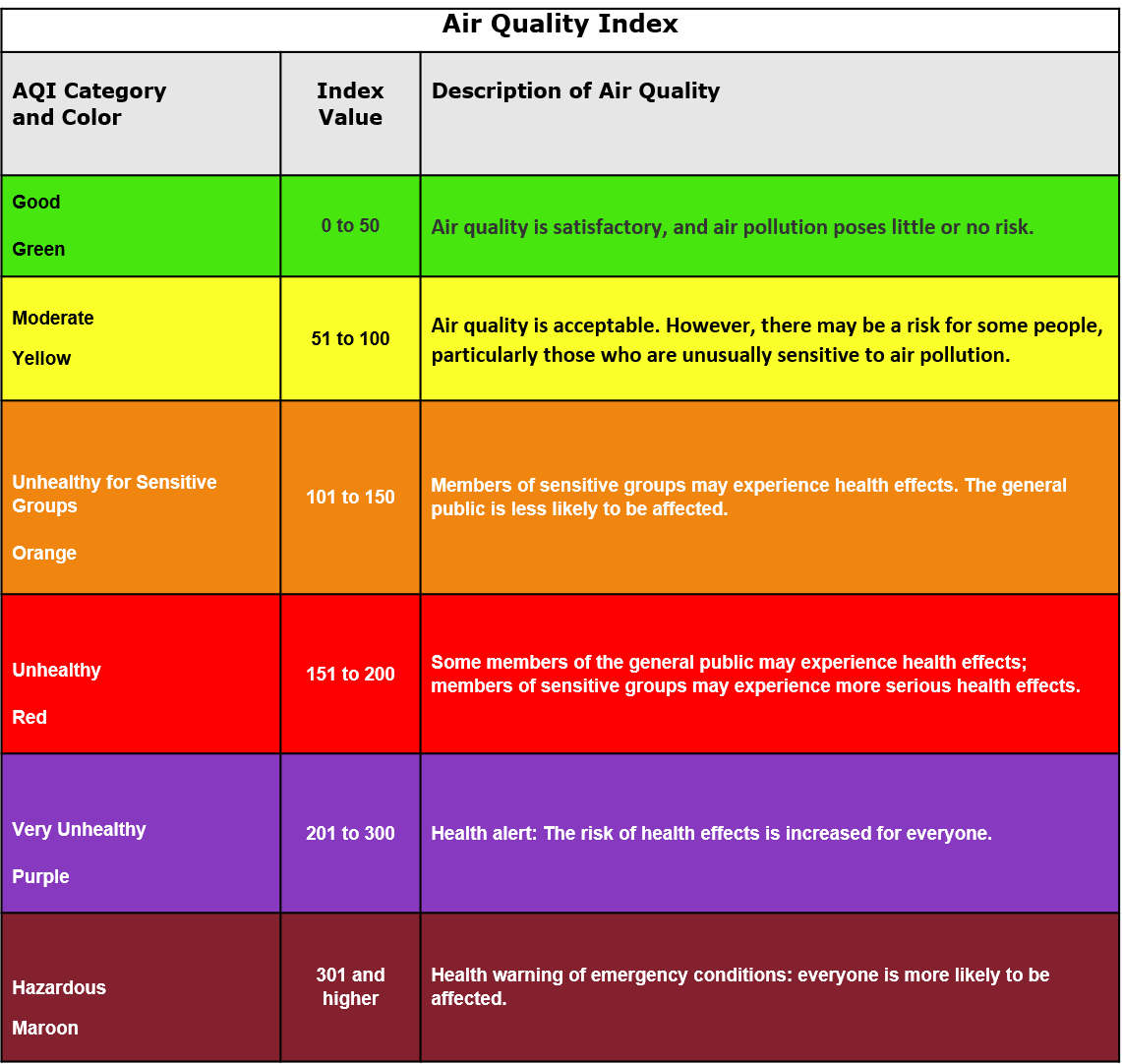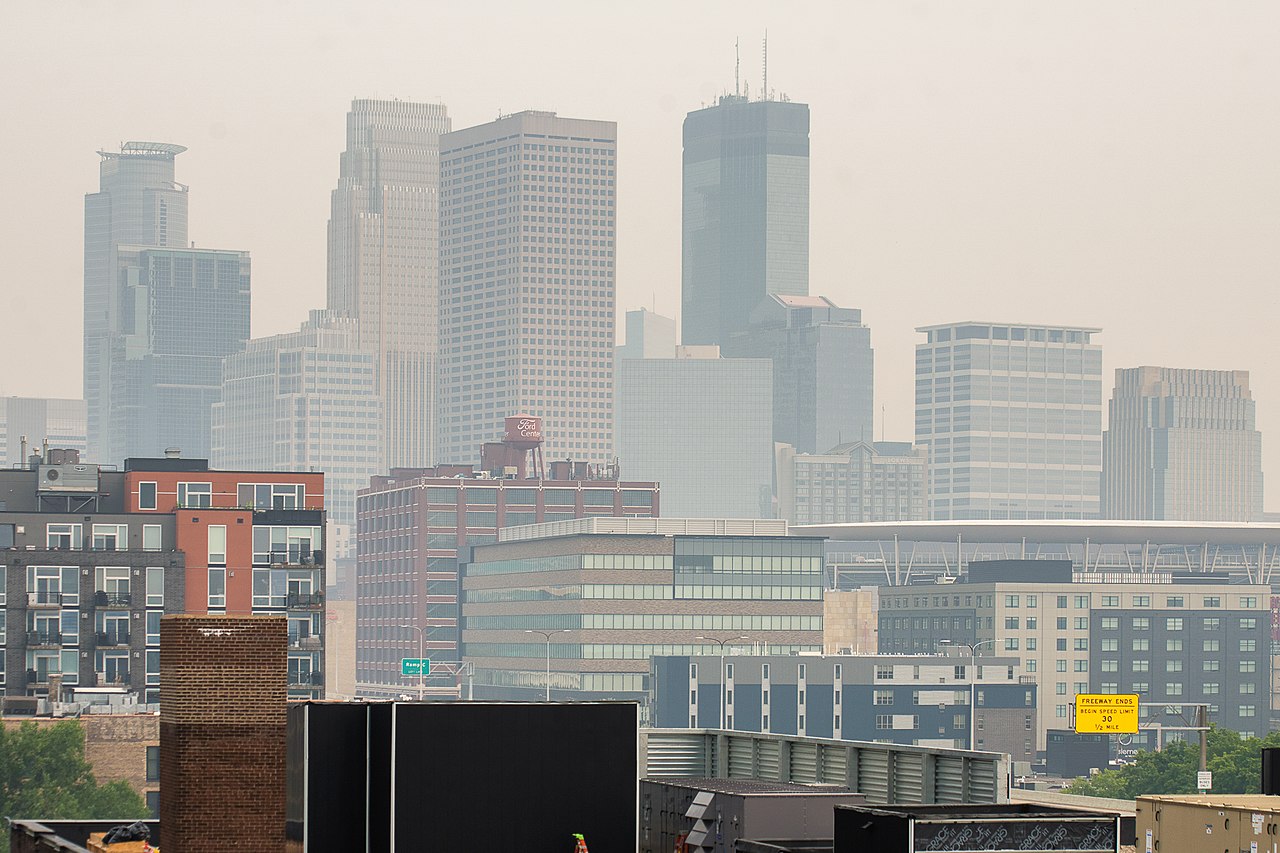Minnesota’s new favorite acronym, AQI

By Jake Richards, Data Specialist Individual Placement / AmeriCorps Member placed at Minnesota Department of Natural Resources, Division of Parks and Trails
Over the past half decade plus, many swaths of the US have fallen under a new type of climate phenomena. One that can spread across the nation in a matter of days and when combined with the summer heat, can really choke landscapes. This new threat is wildfire smoke and its resulting air quality effects. The hazy skies and faint whiffs of campfire have become common place during the warmest months here in Minnesota and today I would like to share some information about how its tracked, its effects on people, and how to mitigate them.
While it is relatively easy to know when the air quality is being impacted, with almost all our 5 senses being able to pick up on its presence, it is much less known what it means. While pollution in the air can mean a ton of different things, the most important thing for everyday life is the quality of the air that can be expected at a given location. That data point is most commonly tracked by a measurement called the Air Quality Index, or AQI. To determine a given locations AQI at a given time, weather monitors run a complex formula with inputs from the 5 major air pollutants: ground-level ozone, particle pollution, carbon monoxide, sulfur dioxide, and nitrogen dioxide. The number that is spit out is the locations AQI, which can then be compared to the Index itself where it will fall into a range of values. The value table can be seen below

Generally, AQI’s between 0-100 are seen as acceptable levels, as Air Quality Alerts are enacted in the US when levels reach 101 or higher. This doesn’t mean that adverse effects are not possible until those levels are reached, as they can be observed in sensitive individuals past an AQI of 50. This range in quality that can cause health effects makes knowledge of strategies to reduce exposure to high AQI’s quite important… so here are 3 big points to keep in mind
- Be Prepared: Check your local weather forecasts and download a companion weather app on your mobile device, a quick check of your locations AQI before spending time outdoors can inform an individual of potential exposure
- Conduct an Air Check: Check your residences air filters and any other air related appliances routinely, keeping filters clean and running without issues can make a big difference
- Wear a mask: While it is not necessarily needed unless levels reach unhealthy levels consistently, wearing a mask is one of the easiest ways to protect yourself from air pollution. While medical cloth masks will typically not filter smaller pollutants, N95 and other heavy-duty masks can be used to protect an individual.

Sources
https://www.airnow.gov/aqi/aqi-basics/
https://www.pca.state.mn.us/air-water-land-climate/understanding-the-air-quality-index-aqi
https://www.lung.org/clean-air/outdoors/10-tips-to-protect-yourself